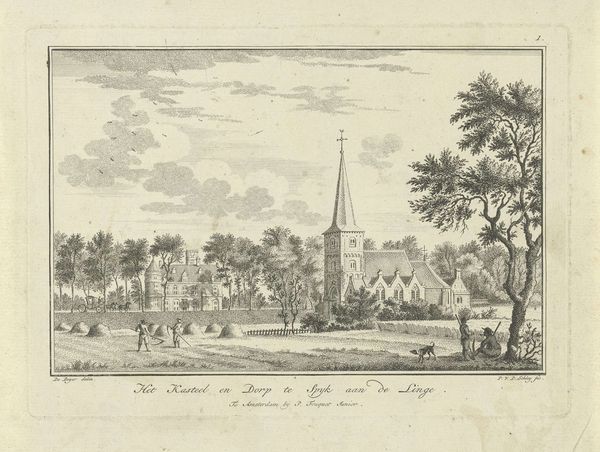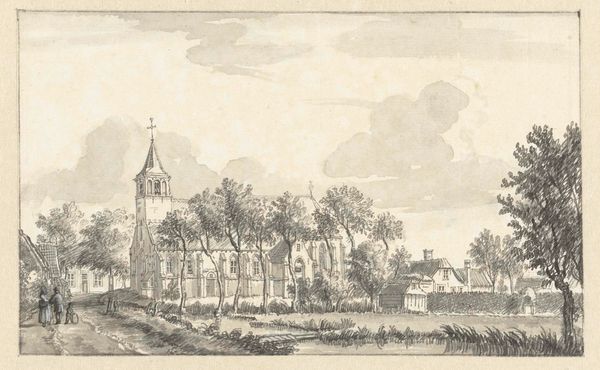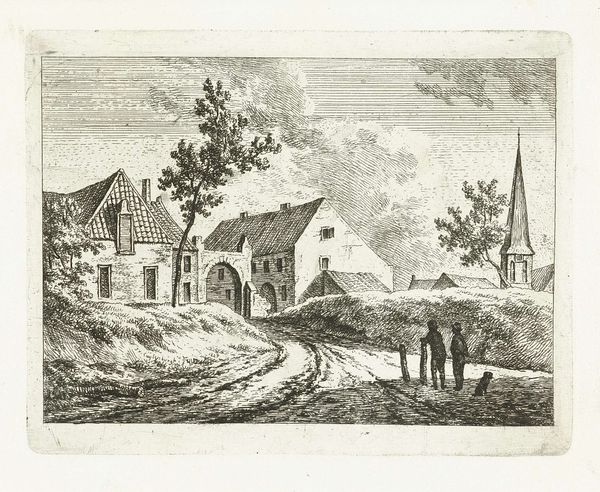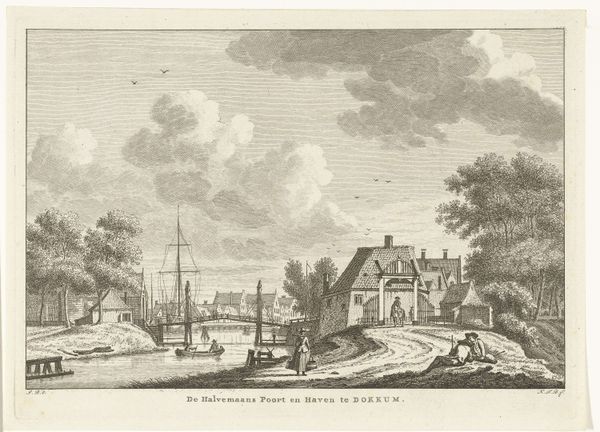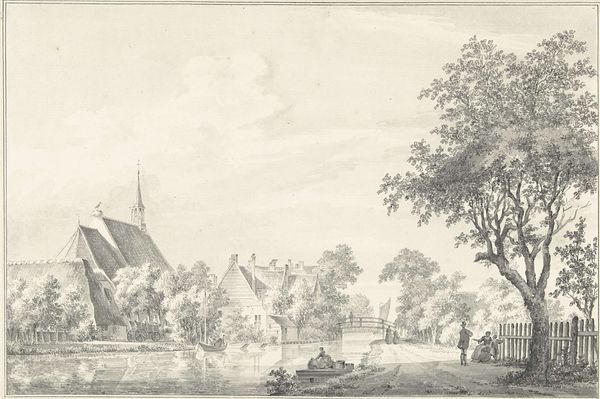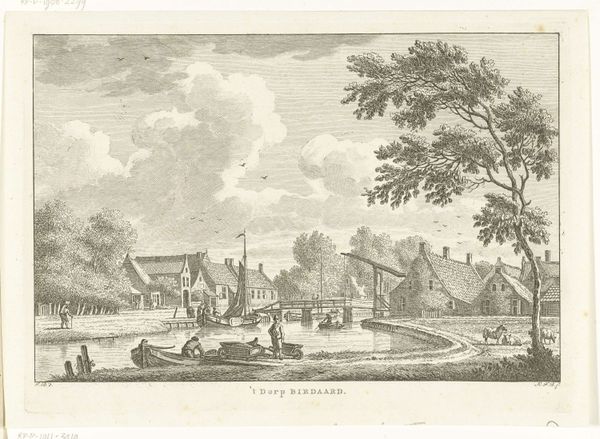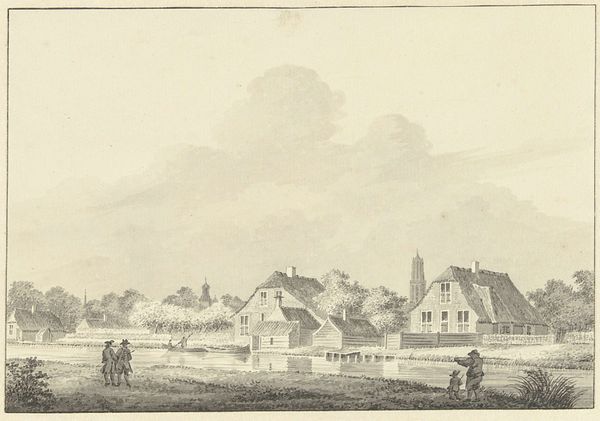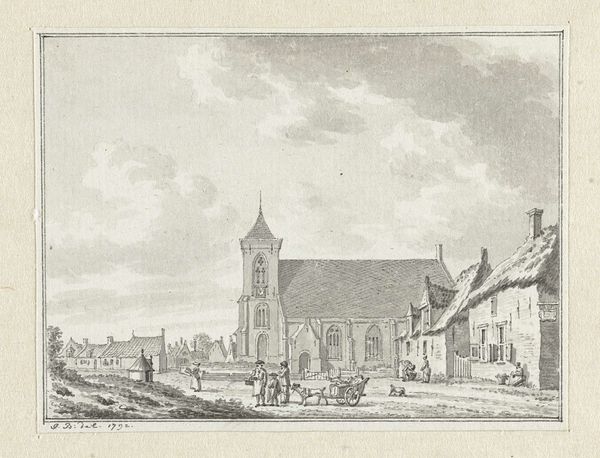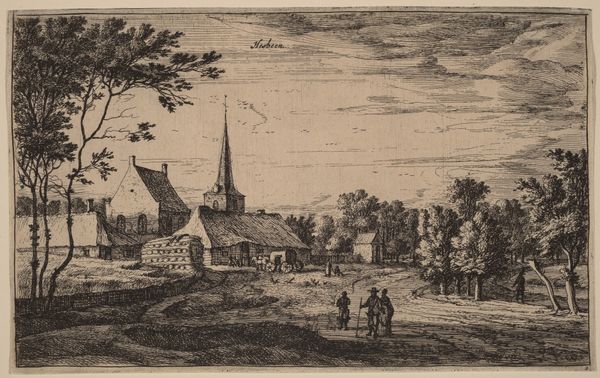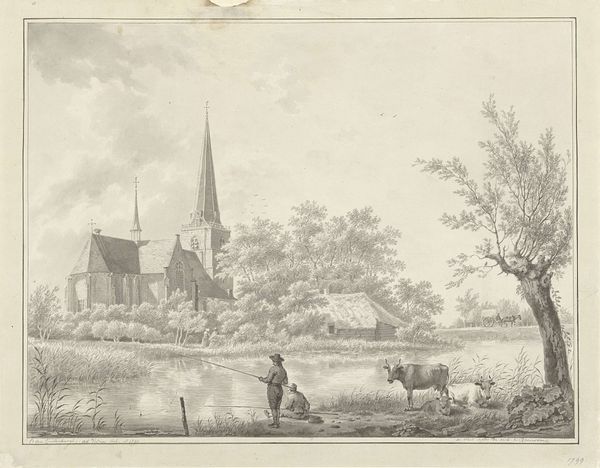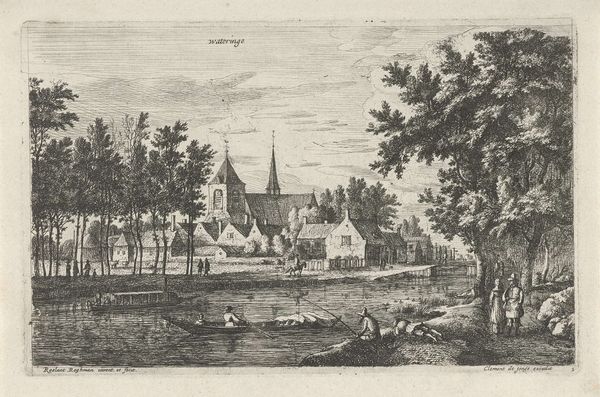
print, engraving
#
neoclacissism
# print
#
pencil sketch
#
old engraving style
#
landscape
#
cityscape
#
engraving
#
realism
Dimensions: width 194 mm, height 164 mm
Copyright: Rijks Museum: Open Domain
Curator: Standing before us is “Gezicht op het dorp Harmelen,” or "View of the Village of Harmelen," an engraving that dates from around 1786 to 1805. Editor: It’s so... quiet. Serene. The understated grey scale of the print somehow amplifies the sense of rural stillness. Makes you want to grab a book and sit by that little creek. Curator: The artist, Jan Evert Grave, employs meticulous lines and careful shading to create a strong sense of depth. Note how the eye is drawn from the foreground, populated by grazing cattle, toward the church spire in the center of the village. The architectural precision is remarkable. Editor: Grave definitely had a knack for detail. But I am sensing this yearning to preserve an image of simpler, slower days, when you can take pleasure just watching the cows munching and water trickle by. Nostalgic, even if nostalgia hadn’t really been invented yet! Curator: It's tempting to view it through a romantic lens, but Grave's style adheres quite closely to the tenets of realism and Neoclassicism. This isn't just about sentimental longing. The balanced composition and clear lines reflect a desire for order and clarity – a distinctly Enlightenment sensibility. Editor: Order, huh? Maybe. But look at those billowing clouds! They're almost turbulent, set against the static, neatly arranged buildings. It creates a lovely tension—between the man-made and the natural world, the controlled and the wild. Curator: That contrast underscores the engraving’s underlying structure. The village, a symbol of human activity, nestled within the broader landscape—a study in binaries! Editor: Right. Or maybe it shows how hard the villagers work, and at the end of the day all that striving makes them simply want to relax to look up and contemplate those turbulent clouds? Either way it gets you thinking…and perhaps planning your next escape to the countryside. Curator: Well, regardless of your emotional response, Grave's work remains a compelling demonstration of late 18th century printmaking, as you observe this small village in its landscape it serves to remind you the importance of structure but that beauty often arises in the interplay between precision and feeling.
Comments
No comments
Be the first to comment and join the conversation on the ultimate creative platform.
